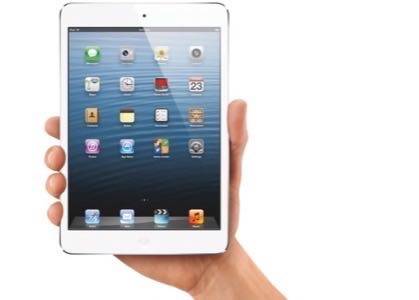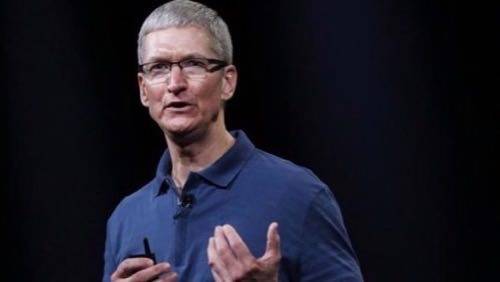
2012 was a defensive year for Apple. The Cupertino giant spent 2012 refining its offerings and reshuffling its management under the watchful eye of an industry that finally started to sparkle with interesting Apple alternatives. Most of its moves were successful. A few missed the mark. But things mostly worked out for the best, and Apple could be poised for a profound 2013.

Hardware Happiness
Apple can tout two unambiguous triumphs this year. The iPhone 5 is one of the finest mobile computers ever made, and it improves upon the 4 series in ways that were essential to preserving the primacy of the iPhone line. And the iPad Mini was hailed by many as “the real iPad,” making the original 10-inch model suddenly seem heavy and unwieldy.
Apple managed to lighten the iPhone and slim it down while elongating the screen, and it encased the whole thing in satisfying metal rather than fragile glass. iOS devices had begun to look and feel delicate and precious in the face of more rugged Android devices. For the first time since the original iPhone with its metal back, the iPhone now looks great after a little wear and tear, less like a luxurious toy and more like a tool.

The iPad Mini is similarly rugged, better suited for the everyday use cases of a tablet. There are still good reasons to have a large-screen tablet, from movies and gaming to any kind of application that takes full advantage of a spatial interface. But for people who use tablets primarily for reading, navigating and communicating, the Mini is ideal.
It’s important to note, though, that Apple was beaten to market in the small-tablet category by Google’s Nexus 7 from ASUS. Apple had long ignored the one-handed tablet form factor, but Google proved that you could pack a compelling computer in a smaller size. Apple didn’t need to prove anything in tablets, though. It just needed to keep making the best ones, and it did.
This was also the year of the MacBook Pro with Retina Display, the first step forward in the next generation of laptop computers. If all the displays will be retina-resolution soon, developers and designers need a Retina Mac to build for them. They now have 13-inch and 15-inch variants from which to choose.
So that’s a pretty solid hardware year for Apple, and those are just the highlights. We could talk about the super-thin iMac, too, but who cares how thick a desktop computer is?

Software Struggles
On the software side, Apple had a pretty good year overall, but also hit some significant trouble spots.
OS X Mountain Lion and iOS 6 came with vast improvements, especially in areas where desktop and mobile applications need to communicate. Apple users now have system-level login, posting and notifications for Facebook as well as for Twitter. Photo Streams can now be shared. AirPlay mirroring to Apple TV is almost always possible from almost any Apple device. There’s even a great (yes, great) new version of iTunes to tie it all together.
But 2012 was also the year that Apple broke up with Google, and its user experience suffered for it. Apple Maps was just not good enough at launch, and Apple ended up with egg on its face. Want more proof? When Google released Google Maps for iOS in December, it rocketed to the top of the free app charts.
But Apple kept it classy, issuing an apologetic letter from CEO Tim Cook and prominently featured mapping apps by other companies in the App Store. In the end, iOS users just ended up with more choices for vector-based maps and turn-by-turn directions, and they’re certainly better off now than they were in iOS 5 and before.
Cloud services remain Apple’s big weakness. iCloud does not “just work” as advertised. In 2013, Apple is going to have to do better at the Web services behind its offerings, or Google is going to have the upper hand.

Company Changes
Asserting his control of the company, Tim Cook cleaned house in 2012. He fired Scott Forstall, the man responsible for iOS, citing personality conflicts at the company’s highest levels. He also axed Richard Williamson, the manager responsible for Maps. He also had to can John Browett the ill-considered head of retail who Cook had hired only six months prior.
The top-level rearrangement seems to make more sense for Apple’s current direction. Eddy Cue now runs all online services, gaining added responsibility for Siri and Maps, in addition to iTunes and iCloud. Craig Federighi is now in charge of both OS X and iOS.
Bob Mansfield, who ran hardware engineering, had planned to retire, but after Forstall’s departure, he decided to stick around and lead the new Technologies group, which combines wireless and semiconductor teams. Industrial designer Jony Ive is now completely in charge of “human interface” design, meaning he will determine the feel and function of all hardware and software.
2013 Is Calling
Based on Apple’s positioning in 2012, we can expect some pretty significant hardware updates in 2013, along with more-incremental catch-up improvements in software and services.
Look for Retina displays across more products. A Retina MacBook Air would be a huge hit, presumably. And of course, it would be nice to see a retina iPad Mini.
Some analysts forecast an accelerated product cycle for Apple hardware. And there’s always that television speculation. But there may not be an Apple TV set in the works. In fact, Apple’s answer to TV could already be hiding in plain sight.
A $99 black box that can be easily replaced and can stream media from anywhere is all Apple needs to revolutionize the living room – once it has an app ecosystem. In 2013, we may see some significant app offerings from TV content providers, and then we’ll see the existing Apple TV evolve into more than just an “area of intense interest.”
Tim Cook photo courtesy of Reuters.

















